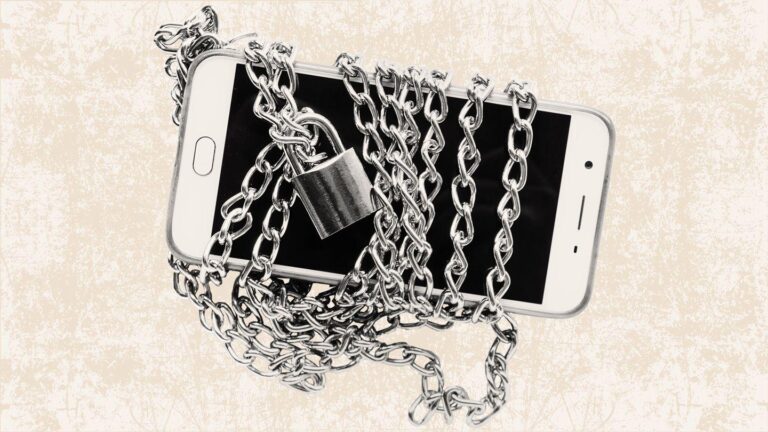In an era dominated by the omnipresence of digital technology, the boundary between online interaction and offline reality becomes increasingly blurred. The phenomenon of “digital detox” has emerged not merely as a buzzword but as a crucial practice for maintaining mental equilibrium. This article delves into the science and rationale behind digital detox, examining its impact on mental health while exploring strategies to achieve an effective balance between our virtual and physical environments. By dissecting empirical studies and expert opinions, we aim to illuminate how intentional disengagement from digital devices can foster a healthier, more mindful existence.
Understanding Digital Overload and Its Mental Health Implications
In today’s technology-driven world, our constant connectivity can lead to digital overload, a state where the sheer volume of online activity becomes overwhelming. This can manifest in several ways, including increased stress levels, reduced productivity, and even difficulty in maintaining personal relationships. Common signs of digital overload include:
- Persistent feelings of anxiety or stress related to digital communications
- Trouble focusing on tasks due to frequent notifications
- Decreased physical activity due to prolonged screen time
- Difficulty sleeping after using devices late at night
The implications for mental health can be significant. Continuous exposure to digital content can lead to mental fatigue and burnout, impacting both professional and personal life. Studies suggest that taking periodic breaks from screens and practicing mindful usage are effective strategies to mitigate these impacts. Consider creating boundaries for digital activity, such as using apps that limit screen time, establishing tech-free zones, and promoting offline hobbies.
| Strategy | Benefit |
|---|---|
| Scheduled Breaks | Reduces eye strain |
| Tech-Free Zones | Improves sleep quality |
| Mindfulness Practices | Enhances focus |

Evaluating the Psychological Benefits of Reducing Screen Time
Research shows that reducing screen time can have profound psychological benefits. Excessive screen use is often linked to increased anxiety, depression, and sleep disturbances. By limiting your time on electronic devices, you might notice immediate improvements in your mood and mental clarity. One study revealed that people who cut their social media usage to 30 minutes a day over three weeks experienced significant reductions in loneliness and depression. Here are some key benefits:
- Improved Sleep: Less screen exposure, especially before bed, enhances sleep quality by reducing blue light interference with melatonin production.
- Better Mood: Reducing screen time lowers the risks of encountering negative online interactions and cyberbullying.
- Increased Productivity: With fewer digital distractions, you can focus better on tasks and hobbies that bring you joy and fulfillment.
A table highlighting the benefits of reduced screen time can be seen below:
| Benefit | Description |
|---|---|
| Less Anxiety | Reduced exposure to stress-inducing content. |
| Enhanced Focus | Improved attention span and productivity. |
| Healthier Relationships | More face-to-face interactions. |

Strategies for Implementing an Effective Digital Detox
Begin by incorporating small, manageable changes into your daily routine. Gradually reduce screen time by setting specific, realistic goals. For instance, start with avoiding digital devices for the first hour after waking up and the last hour before bed. It’s also helpful to use apps that track your screen time and remind you to take breaks. Designate tech-free zones in your home, such as the dining area or bedroom, to encourage moments of offline relaxation and family bonding.
Engage in offline activities that capture your interest and fill the void left by reduced screen time. Consider hobbies such as hiking, reading, or gardening. Participate in local community events or volunteer work to foster real-world connections. Here are some ideas for tech-free activities:
- Reading a book or magazine
- Taking a walk in nature
- Cooking new recipes
- Practicing mindfulness or meditation
| Activity | Benefits |
|---|---|
| Reading | Improves concentration |
| Hiking | Boosts physical health |
| Cooking | Enhances creativity |
| Meditation | Reduces stress |

Actionable Steps for Maintaining a Balanced Online-Offline Lifestyle
To achieve a healthier balance between your online and offline worlds, start with these concrete steps. Create a designated time each day where you’re entirely offline. For instance, avoid checking your phone an hour before bedtime and immediately after you wake up. This helps reset your brain and prepares you for a productive day. Consider setting specific time blocks for social media use, and stick to them. By scheduling your digital interactions, you create more opportunities to engage in offline activities, leading to a more fulfilling life.
Engage in offline hobbies that pull you away from screens. Activities like reading physical books, gardening, or exercising can provide substantial mental health benefits. Additionally, periodically clean up your digital life. Unsubscribe from redundant emails, unfollow negative social media accounts, and delete apps that drain your time or mood. This not only helps declutter your devices but also your mind. Here’s a simple comparison of productive offline vs. online activities to consider:
| Offline Activity | Benefit | Online Alternative |
|---|---|---|
| Reading a book | Enhances focus and reduces stress | Browsing social media |
| Gardening | Improves mood and physical health | Watching YouTube |
| Exercise | Boosts energy and mental clarity | Gaming |
Q&A
Q&A: Understanding Digital Detox for Optimal Mental Health
Q1: What is a digital detox, and why is it important for mental health?
A1: A digital detox refers to a period during which an individual voluntarily refrains from using digital devices such as smartphones, computers, and tablets. The primary objective is to break free from the constant connectivity and information overload that characterize modern life. Digital detoxes are essential for mental health as they can reduce stress, improve concentration, and foster a healthier balance between online and offline activities. Prolonged exposure to digital screens and social media has been linked to increased anxiety, depression, and sleep disturbances, making periodic breaks crucial for mental well-being.
Q2: What are the physiological and psychological effects of excessive digital consumption?
A2: Excessive digital consumption can lead to various physiological and psychological issues. Physiologically, prolonged screen time can cause eyestrain, headaches, and disrupted sleep patterns due to blue light exposure, which interferes with melatonin production. Psychologically, overuse of digital devices is associated with elevated levels of stress, anxiety, and depression. The constant need for social validation through likes and comments, coupled with exposure to curated and often unrealistic portrayals of life, can diminish self-esteem and contribute to feelings of inadequacy.
Q3: How can individuals effectively implement a digital detox in their daily lives?
A3: Individuals can implement a digital detox by starting with small, manageable steps:
- Set Boundaries: Establish specific times during the day when devices are put away, such as during meals or an hour before bedtime.
- Use Technology Mindfully: Engage with digital content purposefully rather than mindlessly scrolling. Prioritize tasks and limit time spent on non-essential apps.
- Create Offline Activities: Invest time in hobbies, exercise, reading, or social interactions that do not involve digital screens.
- Inform Others: Let friends and family know about the detox to manage expectations and encourage face-to-face communication.
- Utilize Digital Well-being Tools: Many devices and apps offer features to monitor and limit screen time, which can help track progress and maintain discipline.
Q4: What role do organizations play in promoting digital detox among employees?
A4: Organizations have a crucial role in promoting digital detox among employees by fostering a work culture that values mental health and well-being. They can implement policies such as:
- Encouraging Breaks: Promote regular breaks away from screens and encourage offline team-building activities.
- Flexible Work Hours: Allow flexible schedules to reduce the pressure of being constantly online.
- No-Email Policies: During off-hours, weekends, and vacations, discourage the use of work-related communication.
- Educational Workshops: Provide training on the benefits of digital detox and offer strategies for managing digital consumption effectively.
- Support Programs: Establish mental health support programs that include guidance on achieving a balanced digital lifestyle.
Q5: Can a digital detox have long-term benefits, and if so, what are they?
A5: Yes, a digital detox can have significant long-term benefits. These include:
- Enhanced Focus and Productivity: Reducing distractions from constant notifications can improve concentration and efficiency in both personal and professional tasks.
- Improved Sleep Quality: Limiting screen time, especially before bed, can lead to better sleep patterns and overall restfulness.
- Strengthened Relationships: Spending more time in face-to-face interactions can deepen connections with family and friends.
- Better Mental Health: Regular breaks from digital consumption can lower stress levels, reduce symptoms of anxiety and depression, and promote a more positive outlook on life.
- Increased Physical Activity: With less time spent sedentary in front of screens, individuals are more likely to engage in physical activities that benefit overall health.
balancing online and offline activities through a digital detox can profoundly impact mental health and well-being. By adopting mindful usage practices and encouraging organizational support, individuals can achieve a healthier digital lifestyle.
Concluding Remarks
the growing ubiquity of digital technology necessitates a conscientious approach to managing its impact on mental health. Digital detox strategies serve as vital tools in rediscovering a balanced equilibrium between online engagement and offline well-being. Empirical evidence underscores the benefits of minimizing screen time, enhancing real-world social interactions, and fostering mindfulness. As individuals and societies grapple with mitigating the adverse effects of digital immersion, it is imperative to adopt and advocate for practices that promote a healthier, more sustainable relationship with technology. The journey toward optimal mental health in a digital age is multifaceted and ongoing, warranting further research and thoughtful application of digital detox methodologies.


